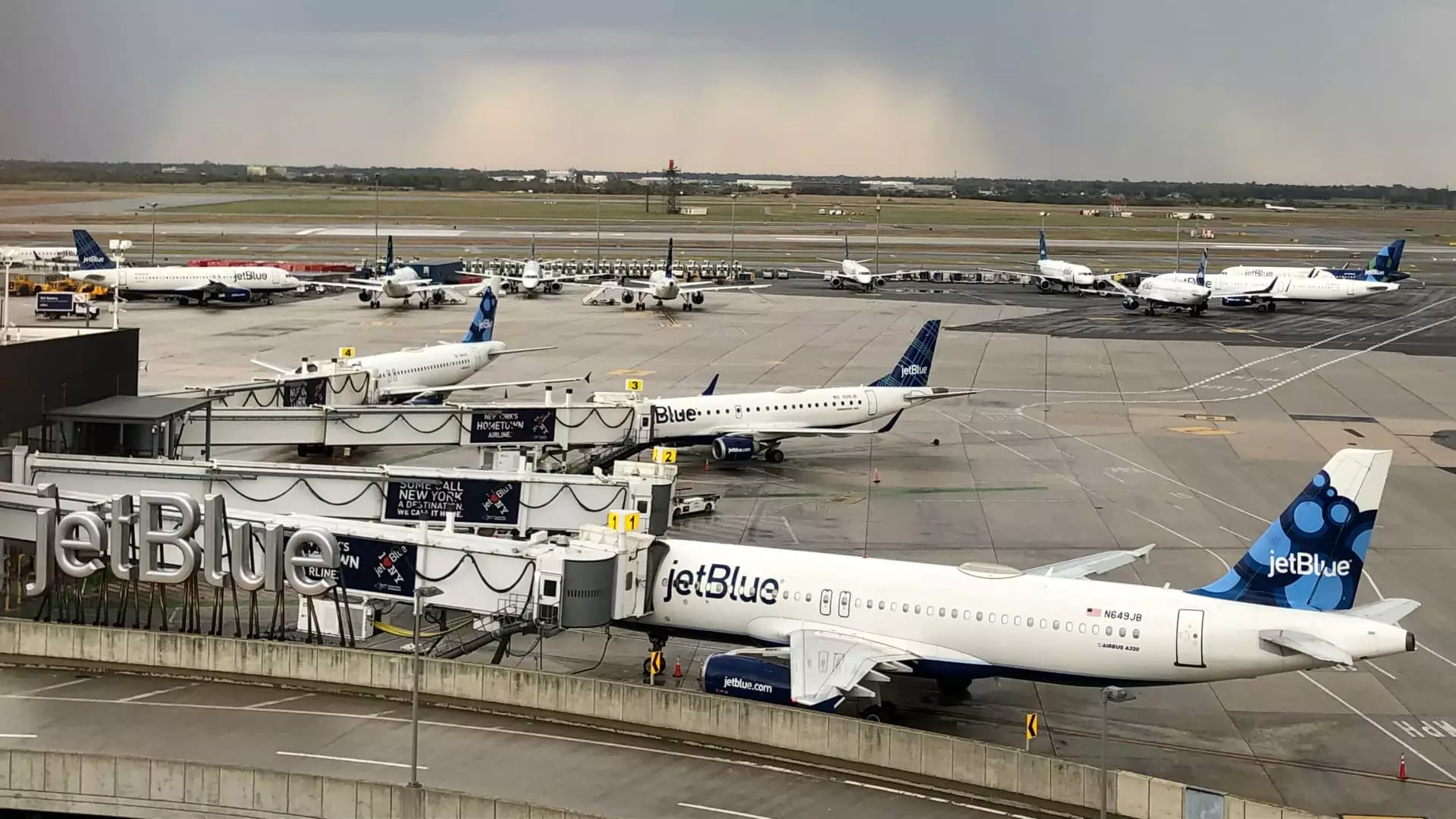JetBlue Airways is poised to make a significant leap in its service offerings by introducing its first-ever airport lounges, marking a notable shift for the airline as it strives to attract the higher-income demographic. This decision not only reflects JetBlue’s aspirations but also aligns them more closely with traditional carriers that have long catered to premium travelers.
After nearly 25 years of operation, the announcement to launch airport lounges is a watershed moment for JetBlue. The lounges, set to debut in New York’s John F. Kennedy International Airport (JFK) and Boston Logan International Airport, signal a strategic pivot as the airline aims to capture a segment of the market that often opts for higher-priced competitors. The JFK lounge will encompass an impressive 8,000 square feet, while the Boston location will span 11,000 square feet. This considerable investment highlights JetBlue’s commitment to enhancing the travel experience for its customers, especially those who have more disposable income.
In addition to the lounges, JetBlue plans to introduce a premium credit card in collaboration with Barclays. Such a financial partnership is a tactical move drawing inspiration from the success of legacy airlines like Delta, United, and American Airlines, who have reaped considerable profits through similar ventures. The forthcoming credit card, coupled with access to the lounges, is intended to create an attractive package for high-spending customers.
JetBlue has strategically outlined who will be granted access to these lounges. Initially, only travelers flying JetBlue’s Mint business class on trans-Atlantic routes, loyalty program elites, and premium credit card holders will enjoy entrée into these exclusive spaces. Jayne O’Brien, JetBlue’s head of marketing and customer support, emphasized maintaining a comfortable and uncrowded environment within the lounges. By selectively granting access, JetBlue aims to ensure that customers do not encounter overcrowding, thereby providing an enjoyable and tranquil atmosphere.
The amenities offered within these lounges promise to include a cocktail bar, an espresso bar, and light dining options, as well as dedicated workspaces. This multi-faceted approach to designing the lounge experience will cater to business travelers and leisure passengers alike, who often look for environments conducive to both productivity and relaxation.
JetBlue is not operating in a vacuum; the airline industry is rife with competition, particularly in the lounge arena. Major airlines have been revitalizing their airport lounges to attract affluent travelers. For instance, Delta recently unveiled its first dedicated Delta One lounge at JFK, specifically for its elite customers and guests. Similarly, both American and United have developed specialized lounges focusing on premium service experiences for first-class and business-class travelers.
Moreover, threats from non-airline entities, such as credit card companies which have begun opening their own airport lounges, add another layer of competition. Brands like American Express, Capital One, and Chase are reshaping the landscape by providing exclusive airport experiences that appeal to frequent travelers who may not be loyal to a single airline.
JetBlue’s venture into lounges and premium credit offerings is part of a broader strategy to diversify revenue streams. With ongoing efforts to control costs—including the deferment of new Airbus aircraft and route reductions—the airline is seeking to solidify its financial footing post-pandemic. In a landscape where budget airlines are scrambling to redefine their value propositions, JetBlue’s focus on premium services represents both an opportunity and a challenge.
By differentiating its offerings and introducing elements typical of higher-priced flights, JetBlue aims to build a loyal customer base among travelers willing to pay more for enhanced experiences. While competing airlines have set the precedent, JetBlue’s holistic approach—coupling lounges with credit offerings and premium cabin services—could be a game changer.
JetBlue’s innovative move towards opening airport lounges reflects a nuanced understanding of the evolving travel landscape. By targeting affluence and investing in customer experience, the airline not only positions itself advantageously against competitors but also revamps its identity in a fiercely competitive market. As travelers increasingly seek value beyond just ticket prices, JetBlue’s strategic pivot could very well reshape its trajectory in the months and years ahead.


Leave a Reply